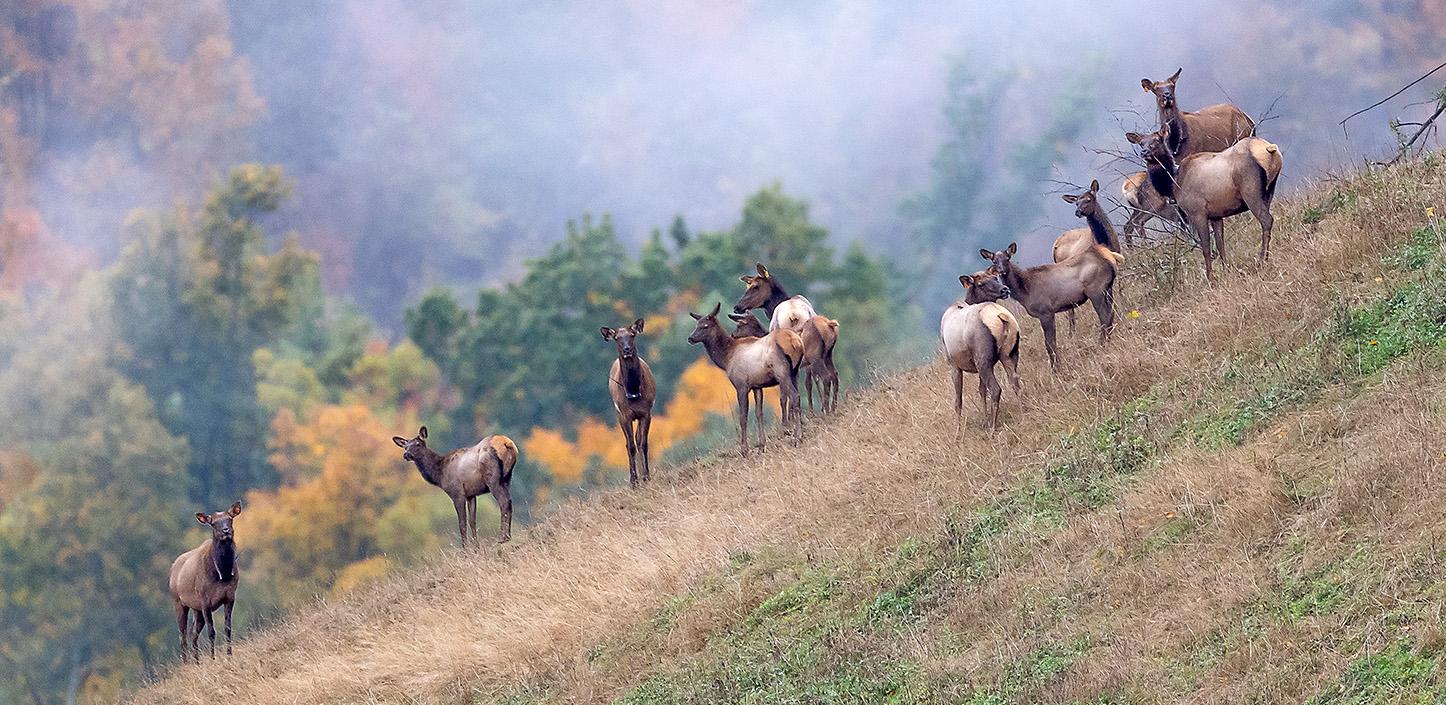
Bringing elk back to Central Appalachia through Acres for America
Thanks to decades of conservation work, the distinctive bugle of elk once again echoes through the mountains of Kentucky, Tennessee, Virginia and West Virginia. A recent Garden & Gun article highlights this remarkable restoration, including two landmark conservation projects funded by the National Fish and Wildlife Foundation and Walmart’s Acres for America program.
Historically, eastern elk roamed widely across the eastern United States, from southern Canada down to Georgia and from the Carolinas across to the Mississippi River. By the mid-1800s, however, overharvesting and habitat loss had decimated the population. In 1997, the Kentucky Department of Fish and Wildlife Resources first launched a reintroduction effort, relocating 1,541 elk from six western states. Today, Kentucky is home to more than 13,000 elk, with smaller populations thriving in Virginia, Tennessee and West Virginia.
Through the Cumberland Forest Project—supported by Walmart’s Acres for America program—the Nature Conservancy has protected 253,000 acres across Kentucky, Tennessee and Virginia giving elk, and many other species, space to roam. But this effort doesn’t just benefit elk. It’s a boon for the local economy as well, supporting a robust outdoor economy, connecting people to nature via increased public access, and generating revenues with a renewed investment in sustainable forestry.
In West Virginia, elk returned in 2015 with the creation of the Tomblin Wildlife Management Area (WMA), a 32,500-acre preserve spanning Logan and Mingo counties. This initiative, supported by the West Virginia Department of Natural Resources, the Conservation Fund, the Rocky Mountain Elk Foundation, and Acres for America, has reestablished elk alongside deer, turkey, bear and other wildlife. The effort has been roundly successful. The herd started with 24 elk and has since grown to about 140, with more on the way.
Elk tourism is also revitalizing the local economy. West Virginia was able to invest $2.1 million from hunting and fishing license funds to build a viewing tower for visitors to spot elk during the seasonal rut at Tomblin WMA.
Since 2005, the Acres for America program has supported projects like these to conserve critical habitats, connect landscapes and support local economies rooted in forestry, ranching and recreation. These efforts ensure that species like elk—and the ecosystems they inhabit—continue to thrive for generations to come.